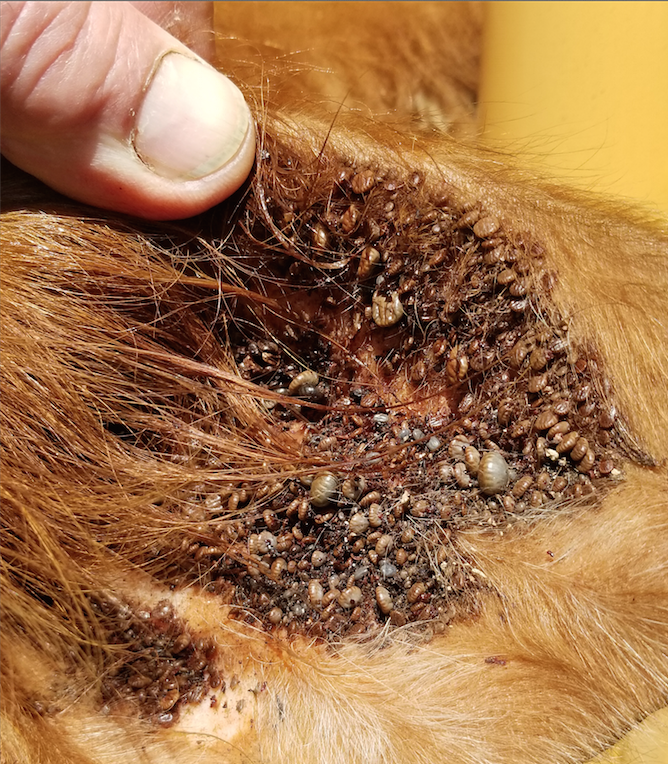Longhorned tick detected in Virginia
Published 9:52 am Wednesday, June 19, 2019

- Pictured is a Longhorned tick on a calf’s ear.
In May of 2018, the National Veterinary Services Laboratory in Ames, Iowa confirmed the finding of the Haemaphysalis longicornis tick (otherwise known as the East Asian or Longhorned tick) in Virginia. It was previously unknown in the state, but since then has been detected in 24 counties, mostly in the western part of the state.
“The tiny tick can appear on cows, horses and other livestock,” said State Veterinarian Dr. Charles Broaddus. “In addition to being a nuisance, they also can be a health risk, especially to newborn or young animals.”
Virginia Department of Agricultural and Consumer Services offers the following advice to farmers, foresters, horseback riders and other people who frequent areas where ticks are abundant: the woods, brushy areas, even uncultivated fields:
• Wear long pants, with shoes and socks – no flip flops or sandals in these areas. Rubber banding pant cuffs or tucking your pant legs into your socks may keep ticks from creeping under pant legs.
• Check yourself carefully after strolling through likely tick habitats and remove any ticks immediately. If possible, have someone else check the back of your neck and other hard-to-see places.
• If you believe you have found the Longhorned tick, notify your local office of the Cooperative Extension Service (ext.vt.edu).
• Check cattle, horses and other free ranging animals routinely for any kind of ticks and remove immediately. If found in quantity, call your veterinarian.
While there are no approved insecticides for the Longhorn tick in the U.S., many of the commonly used permethrin preparations used in the country today are effective. Livestock producers must observe tissue withdrawal times for all insect prevention or treatment preparations used in or on food animals.





